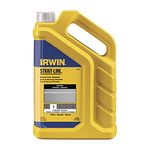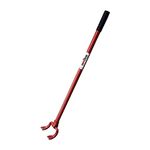Q:
I’m building a deck and plan to plank it with premium grade, 5/4-in. by 6-in. pressure-treated southern yellow pine. I’m unsure about which side of the boards should be facing up and exposed to the weather. The so-called experts seem to be divided in their opinions with one camp insisting that the bark side should face up, while the other is equally adamant that the heart side should face up. Who should I believe?
David Danielson, Bethesda, MD
A:
R. Bruce Hoadley, a professor at the University of Massachusetts, Amherst, and author of Understanding Wood , replies: The which-side-up question has been much debated over the years, and I don’t think there is a single right answer. There are many factors to consider, so let’s first assume that most of the boards are flat sawn (the grain lines intersect the surface at an angle of less than 45°) and that the material was redried after being pressure-treated.
Over time, exposure to the weather causes the boards to warp upward in a concave shape no matter which side is facing up. This event is caused by compression set and shrinkage of the exposed face. Compression set occurs when the board absorbs moisture after being installed. As the board swells, it is restrained by the fasteners, and the wood between the fasteners becomes compressed. Then as the board dries out, the compressed wood shrinks to a smaller size, causing the exposed face of the board to shrink and cup.
So my basic rule is to put the better-looking (and usually the least defective) face upward. Period. After that, there are certain things that can affect the amount of shrinkage. First, I’d maintain a serious coating of sealer on the surface of the boards. Sealer can reduce the compression set of the exposed surfaces significantly by making those surfaces resistant to moisture.
Also, if your deck is close to ground level, soil moisture can make lower surfaces swell more than upper surfaces, again contributing to cupping. If the deck is elevated with good air circulation underneath, then the moisture content will be more uniform, and the boards are more likely to remain flat.
It has also been argued that the heart side of the boards rots more slowly than the bark side, so the heart side should be installed facing up. But consider that the bark side of the boards is usually sapwood, which is less dense and therefore usually absorbs more preservative during the treating process. The denser heartwood absorbs less preservative but is naturally more decay-resistant than sapwood. But over the long run, well-treated sapwood is likely to outlast the heartwood, so it’s still a toss-up.
Fine Homebuilding Recommended Products
Fine Homebuilding receives a commission for items purchased through links on this site, including Amazon Associates and other affiliate advertising programs.

Standard Marking Chalk

Angel Guard Deck Demon

FastenMaster Screw Bolt Fastening System

























